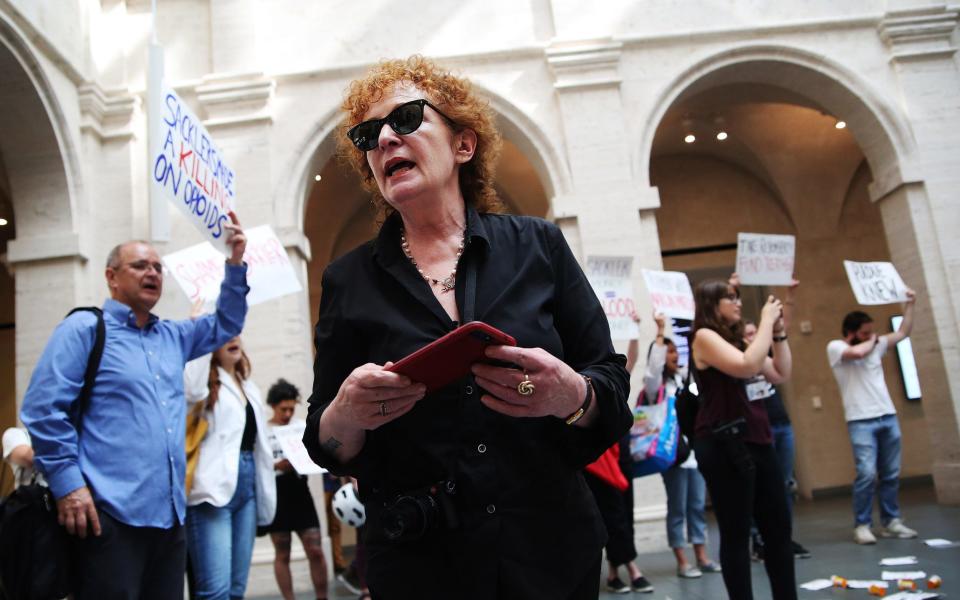Nan Goldin: from The Ballad of Sexual Dependency to declaring war on the Sacklers

The photographer Nan Goldin, world-famous for her bitingly intimate studies of sex and exploration of LGBTQ+ subcultures, declares herself a narrow survivor of America’s opioid epidemic. She was prescribed OxyContin after an operation on an injured hand in 2014, and became addicted for three years. After running out of money, she overdosed on the synthetic opiate Fentanyl, and nearly died.
It’s for this reason that Laura Poitras’ documentary about Goldin, the Venice-winner All the Beauty and the Bloodshed, is able to intertwine art and activism so powerfully. The film’s backbone is Goldin’s fight against the Sackler family, a dynasty that has donated millions to arts and academic institutions across the world, yet whose company Purdue Pharma continued to market and sell OxyContin as late as 2019, and who has faced 3,000 lawsuits for the devastation the epidemic has wrought on American families.
Goldin, in the film’s opening scene, stages a “die-in” protest in the Metropolitan Museum’s Sackler Wing – one of dozens of institutions that would come under pressure to reject the family’s donations and remove their name from galleries. (Many, including the Tate, Guggenheim, V&A and British Museum have now done so.) In 2018, this was the first act of Goldin’s newly formed advocacy group Prescription Addiction Intervention Now – P.A.I.N. – involving the flinging of hundreds of pill bottles, labelled with Sackler, into the reflective pool of the wing’s main space.
Amid this saga, Poitras roves back and forth between some of Goldin’s signal career achievements, which most famously include her 1985 slide show The Ballad of Sexual Dependency – a partly autobiographical project featuring photographs of many of Goldin’s close friends in New York’s Bowery district over the late 1970s and early 1980s.
On the cover of the book version, Nan appears lying in bed, with her then-lover Brian sat smoking naked; the same Brian beat her so badly, on a trip to Berlin in 1984, that her eye nearly detached from its socket. The choice to include a photograph of her ravaged face after this attack, in her own opinion, stopped her going back to him.

There are other threads in this remarkable portrait which could have carried entire films, including the hushed-up suicide of Goldin’s older sister Barbara at 18, and her documenting of HIV-positive friends as they wasted away through the Reagan era.
Everything has weight, and speaks to an agenda about creating art that matters, forcing reflection and change. The faces of the Sacklers, as they listen to bereaved families and Goldin herself remonstrating on a video call, will chill you to the marrow. Whatever one’s familiarity with this searing chronicler of lives on the margins, the film is riveting and essential.
18 cert, 113 min. In cinemas from Friday

